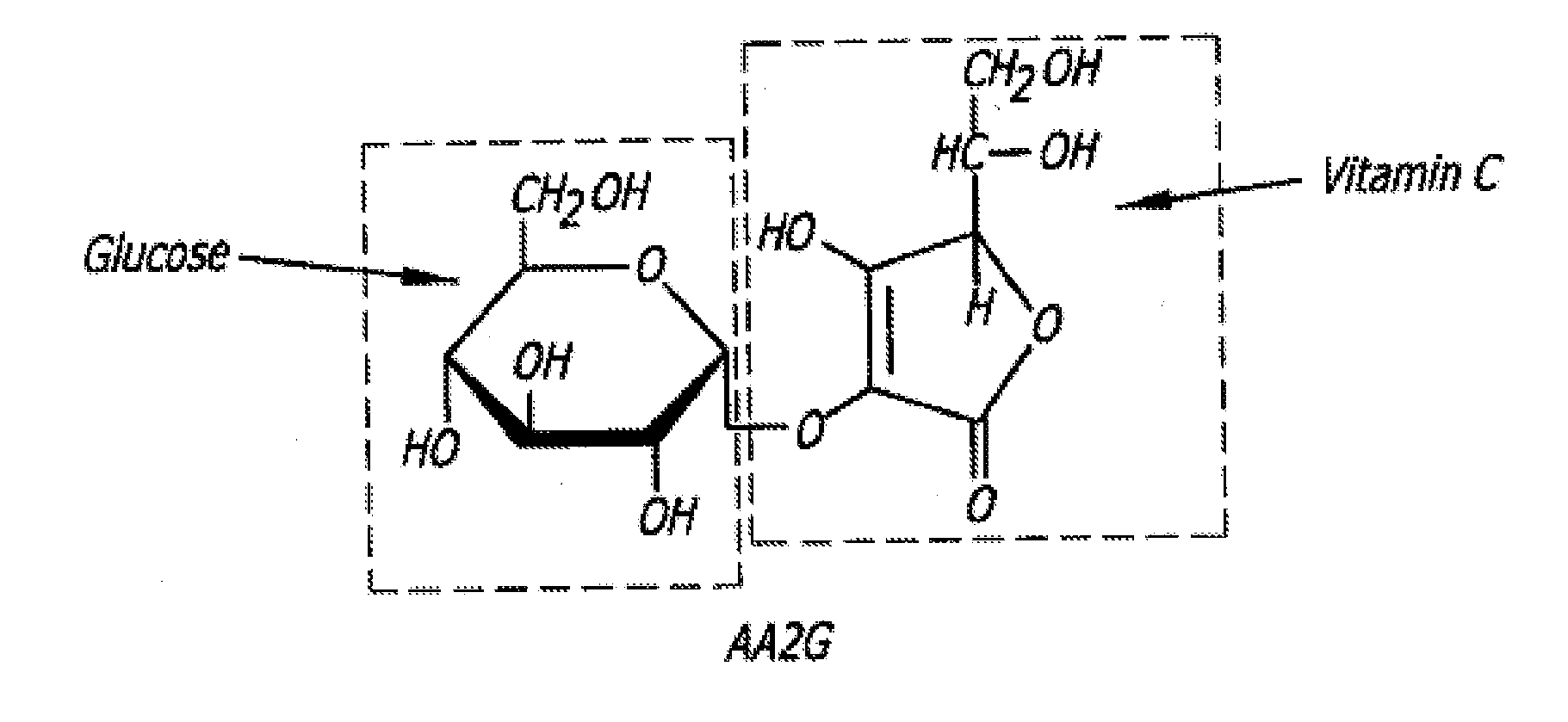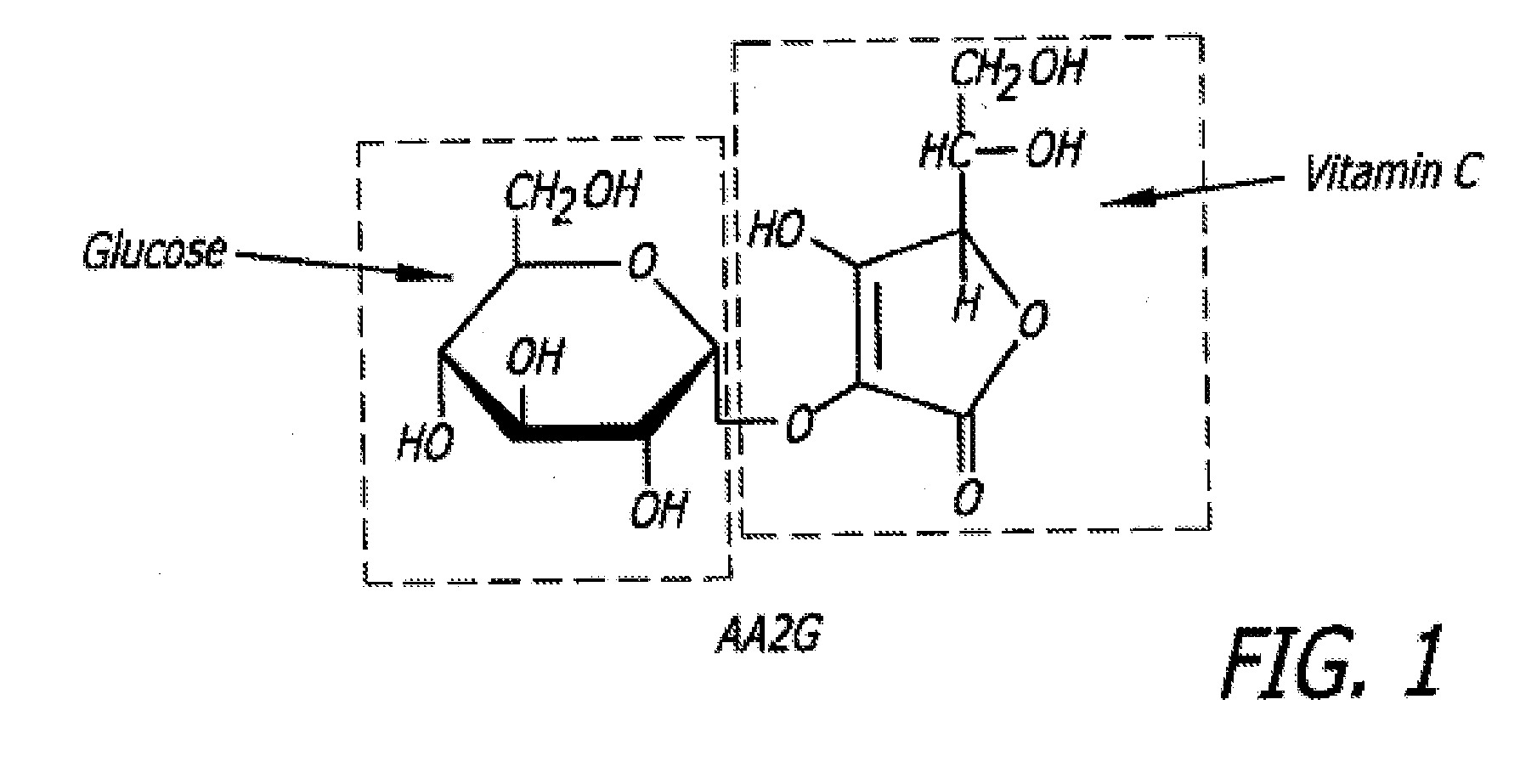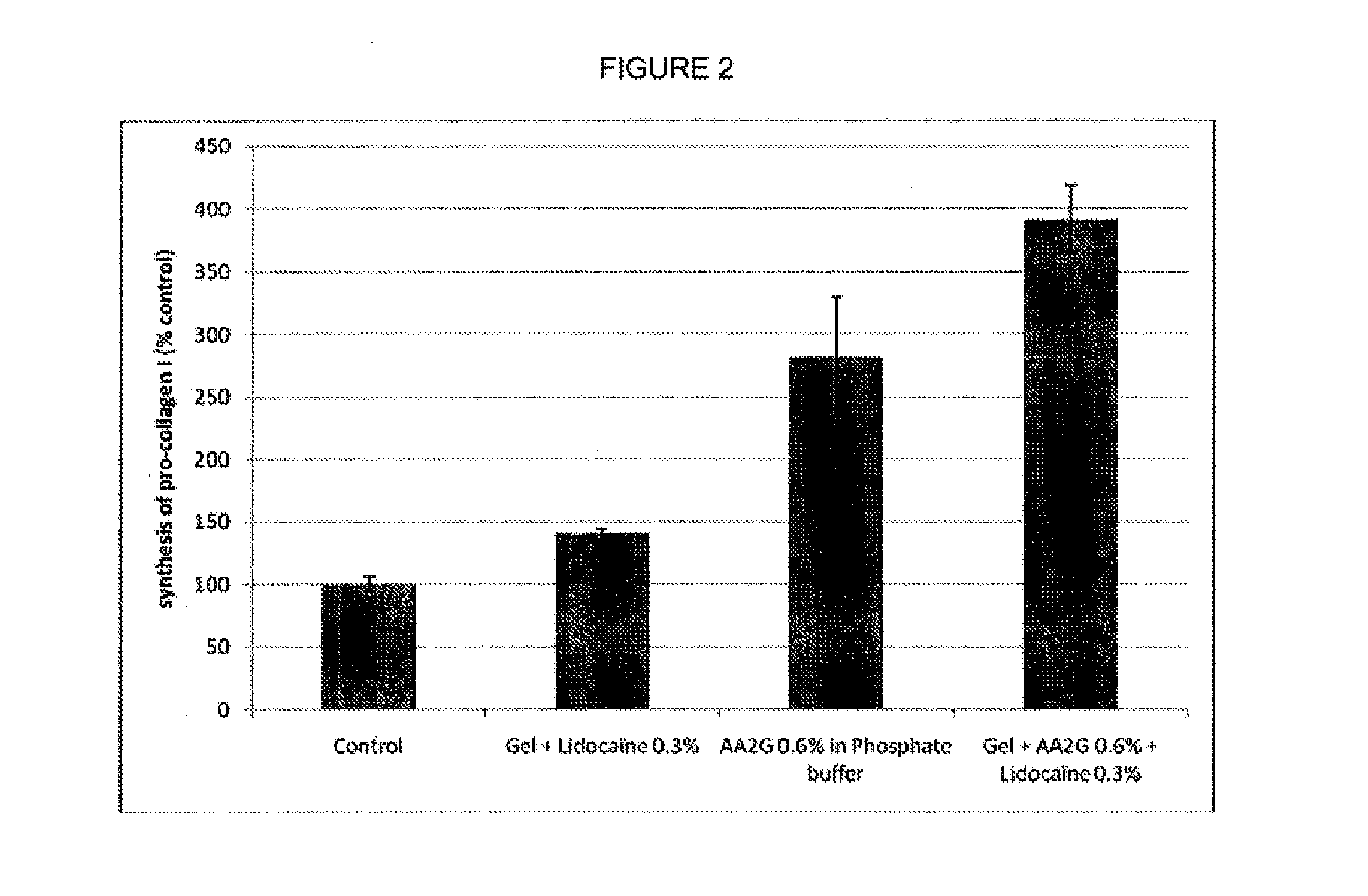Hydrogel compositions comprising vasoconstricting and Anti-hemorrhagic agents for dermatological use
a technology of which is applied in the field of hydrogel compositions comprising vasoconstricting and anti-hemorrhagic agents for dermatological use, can solve the problems of excess skin and ptosis, loss of elasticity, and rough texture, and achieves the effect of prolonging the duration of dermal fillers and great stability
- Summary
- Abstract
- Description
- Claims
- Application Information
AI Technical Summary
Benefits of technology
Problems solved by technology
Method used
Image
Examples
example 1
Method for Determining Gel Cohesivity
[0159]This example illustrates tests that may be performed in order to evidence or quantify cohesivity of a HA-based gel composition.
[0160]First, 0.2 g or 0.4 g of a gel composition to be tested is placed in a glass syringe. Next, 0.2 g or more of phosphate buffer is added to the syringe and the mixture is thoroughly mixed for about 1 hour to obtain a homogenous mixture. Then, the homogenized mixture is centrifuged for 5 min at 2000 tr / min to remove the air bubbles and to allow the decantation of any particles. The syringe is then held in a vertical position and one drop of eosin colorant is deposited at the surface of the gel by means of a syringe and an 18G needle. After 10 min, the dye has slowly diffused through the gel.
[0161]After dilution of the gel, homogenization and decantation, a relatively low cohesivity gel shows a phase separation (an upper diluted less viscous phase without particles and a lower one composed of decanted particles th...
example 2
Effect of Water Soluble Molecules on HA-Based Gel Formulation Extrudability
[0162]The active ingredient was incorporated into a HA-based gel matrix and autoclaved by steam sterilization at a temperature between about 130° C. to about 135° C. for between about one minute and about 10 minutes. The hydrogel properties, aspect (i.e., color / clarity / homogeneity), and extrusion force were analyzed after autoclaving and at 3 years equivalent at room temperature. All formulations were clear, homogenous, uncolored, and had acceptable extrusion force properties after autoclaving and at the 3-year equivalent mark (Table 3). These results show that the test gels exhibited no degradation, indicating that the gels were stable and incorporation of the ingredients had no impact on hydrogel properties and structure.
TABLE 3ExtrusionExtrusionConcen-force (N)force (N)trationafter3 years ~ roomIngredient(%)AspectautoclavingT ° C.Allantoin0.3ClearPASSEDPASSED0.5Homo-PASSEDPASSEDCytidine0.5geneousPASSEDPASS...
example 3
Effect of Vitamin C Derivative on HA-Based Gel Formulation Extrudability and Stability
[0163]Ascorbic acid, at a concentration of 1% (w / w) was, incorporated in a HA-based gel matrix, and the pH of the gel adjusted to about 7 and then autoclaved by steam sterilization at a temperature between about 130° C. to about 135° C. for between about one minute and about 10 minutes. Although clear and uncolored before autoclaving, the gel was clear but yellowed after autoclaving indicating that the test gel was degraded.
PUM
| Property | Measurement | Unit |
|---|---|---|
| Temperature | aaaaa | aaaaa |
| Time | aaaaa | aaaaa |
| Time | aaaaa | aaaaa |
Abstract
Description
Claims
Application Information
 Login to View More
Login to View More - R&D
- Intellectual Property
- Life Sciences
- Materials
- Tech Scout
- Unparalleled Data Quality
- Higher Quality Content
- 60% Fewer Hallucinations
Browse by: Latest US Patents, China's latest patents, Technical Efficacy Thesaurus, Application Domain, Technology Topic, Popular Technical Reports.
© 2025 PatSnap. All rights reserved.Legal|Privacy policy|Modern Slavery Act Transparency Statement|Sitemap|About US| Contact US: help@patsnap.com



